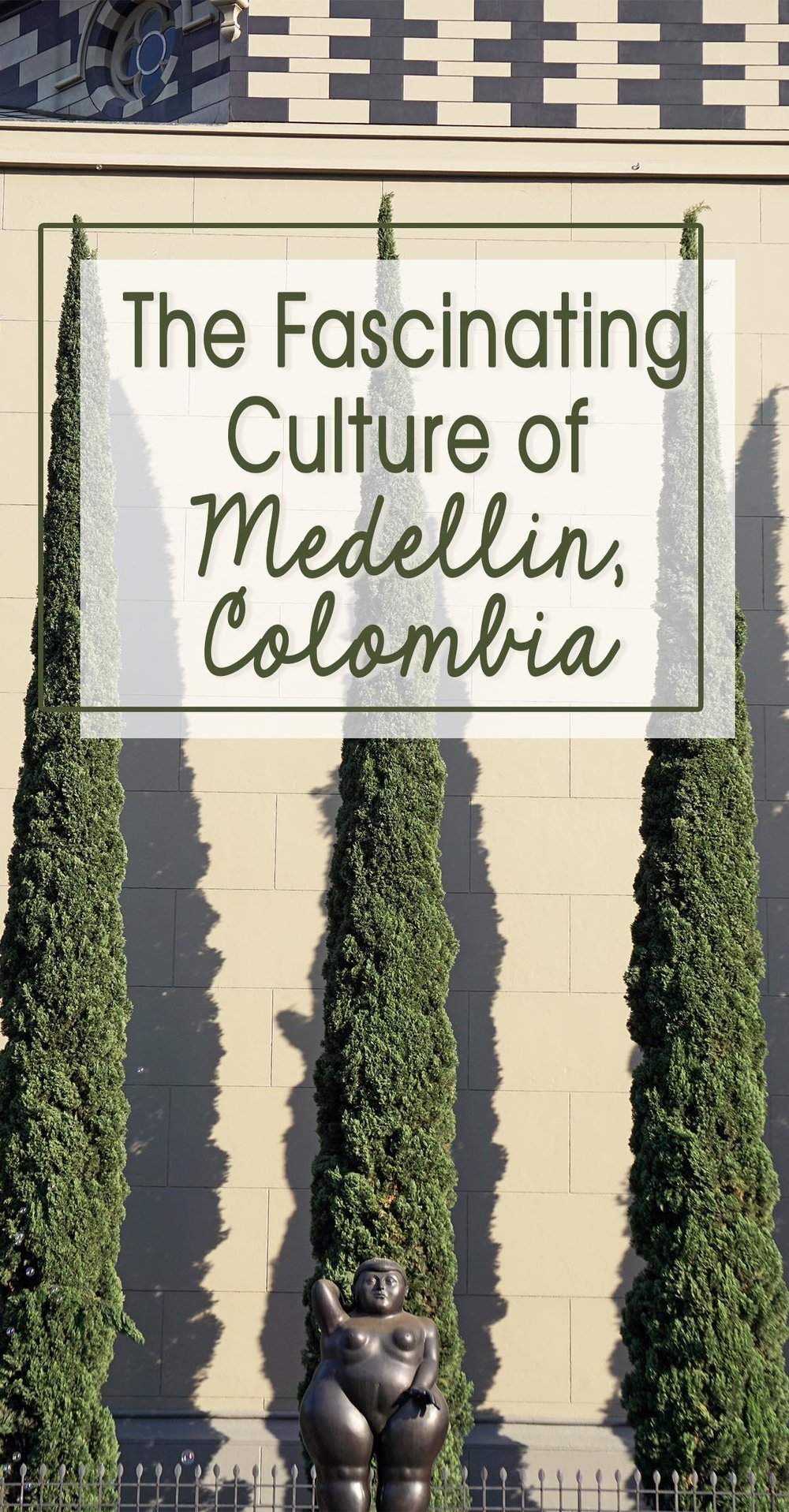Things to Do in Medellin, Colombia to Experience the Fascinating Culture
/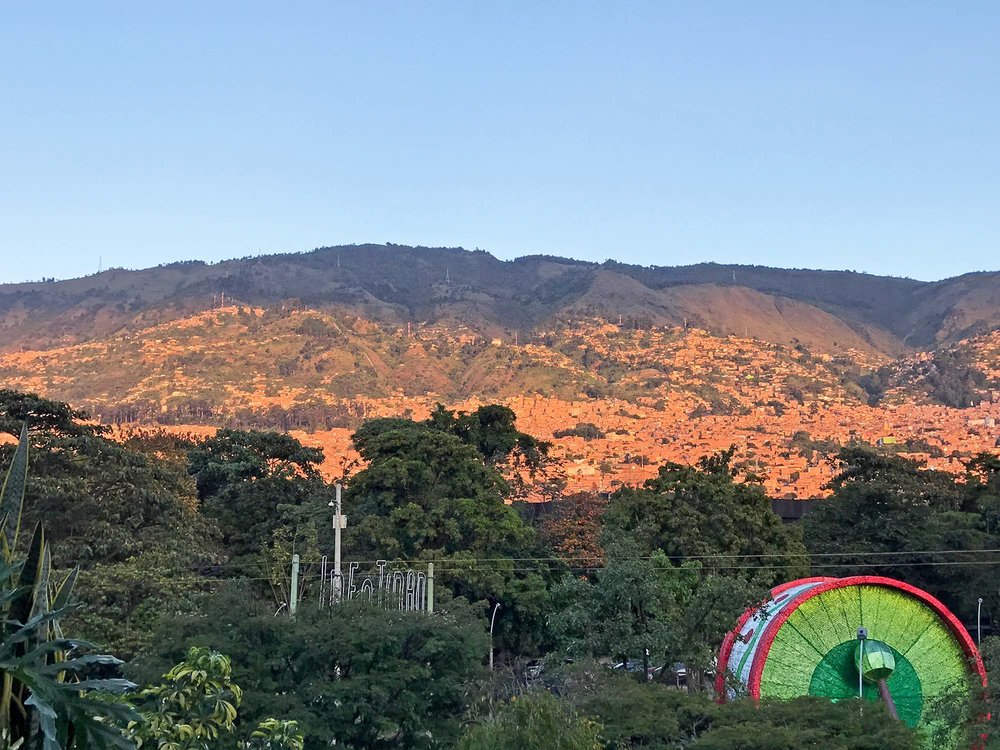
The Colombian city of Medellín, or The City of Eternal Spring, is a vibrant city surrounded by lush mountains providing tourists and residents with a variety of cultural activities to enjoy.
It didn’t take long to fall in love with Colombia; the people are kind and full of life, the landscapes are lush and stunning, and the history, food and culture are diverse and delightful. Stepping foot in Medellín only solidified my love for this vibrant country.
After spending roughly two months on the North Coast of Colombia admiring the UNESCO protected old city of Cartagena, hiking and relaxing in Tayrona National Park, trekking through the jungle to the Lost City, and exploring quaint towns like Palomino and Minco I was looking forward to being in the “big city” of Medellín.
In addition to the wonderful things I had heard about the city, I had several friends who were living in Medellín. Some of these friends I had met in Colombia and some I met earlier on my travels in Central America, either way it seemed as if many people decided Medellín to be a suitable location for living, so I was very curious to see why.
Medellín is nicknamed “The City of Eternal Spring” for their year-round temperate climate; overcast mornings, sunny afternoon, cool evenings and frequent rains.
It’s the second largest city in Colombia – at roughly 2.5 million people. The capital of Colombia, Bogotá, has the largest population at roughly 8.1 million people, and city of Cali comes in a close third with 2.4 million people.
The city is becoming one of the “it” cities in the world – attracting many ex-pats. Once you visit, it’s easy to see why.
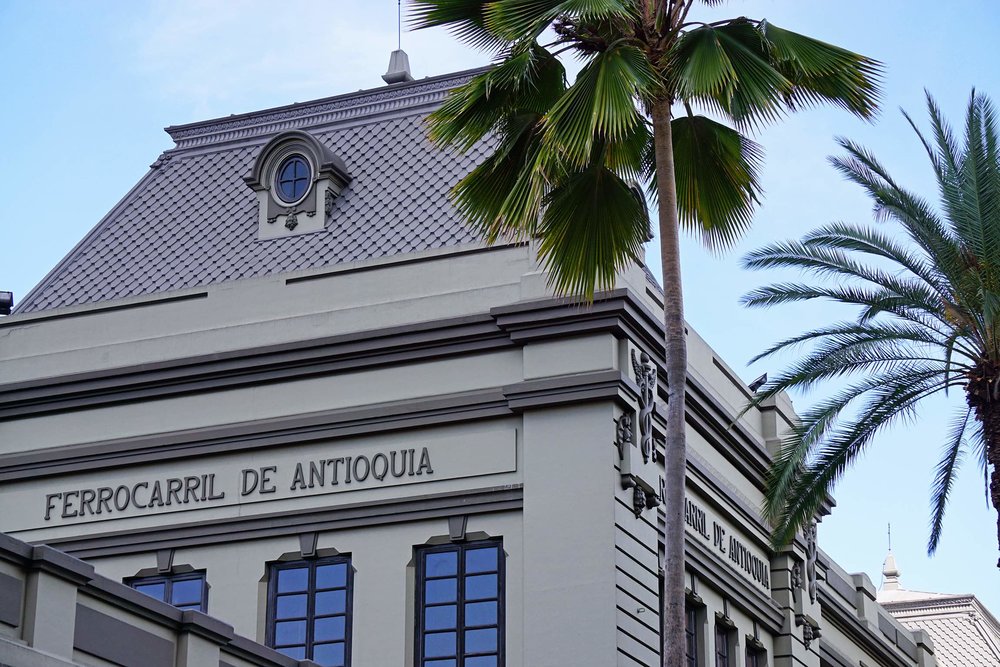
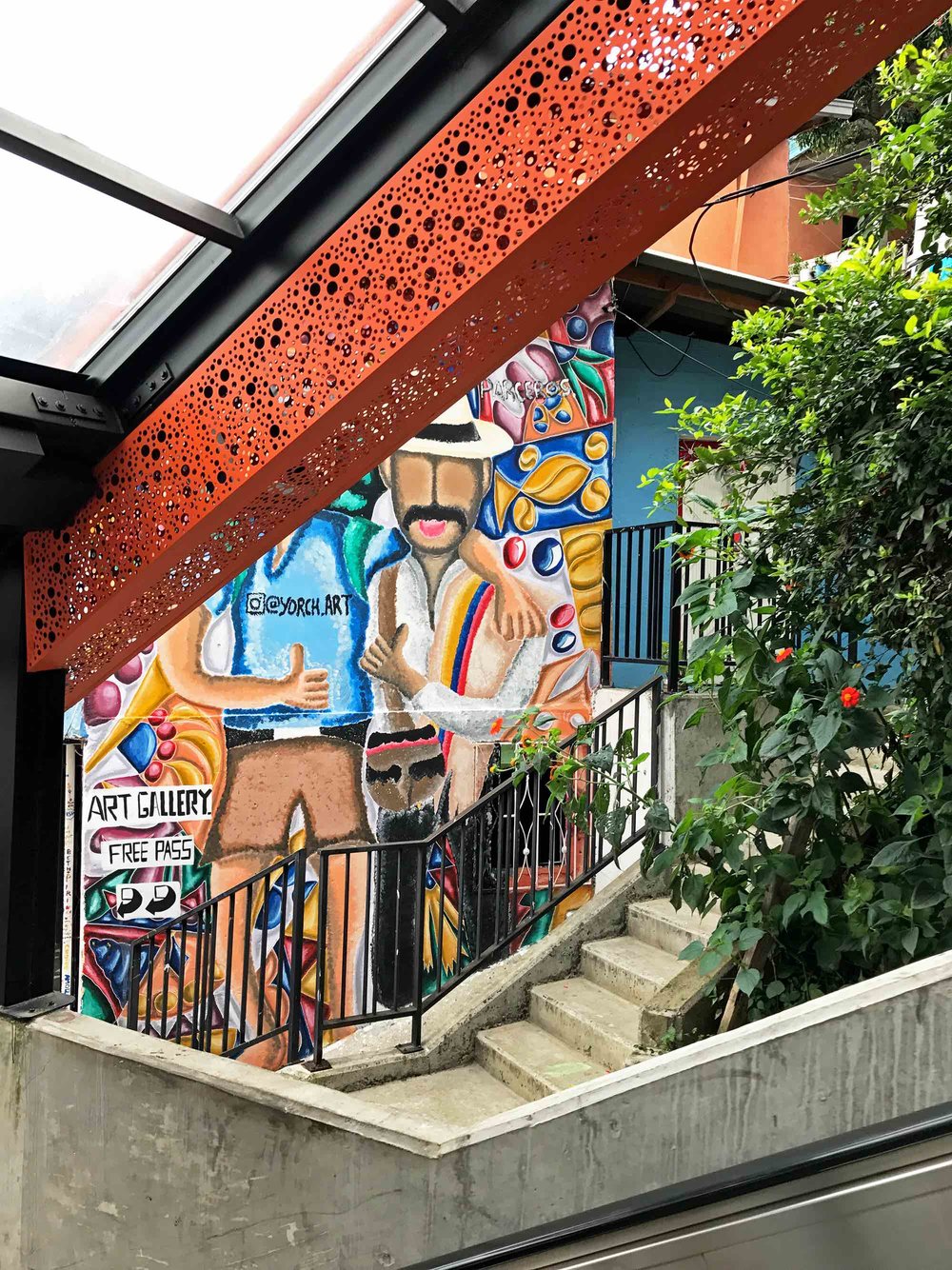
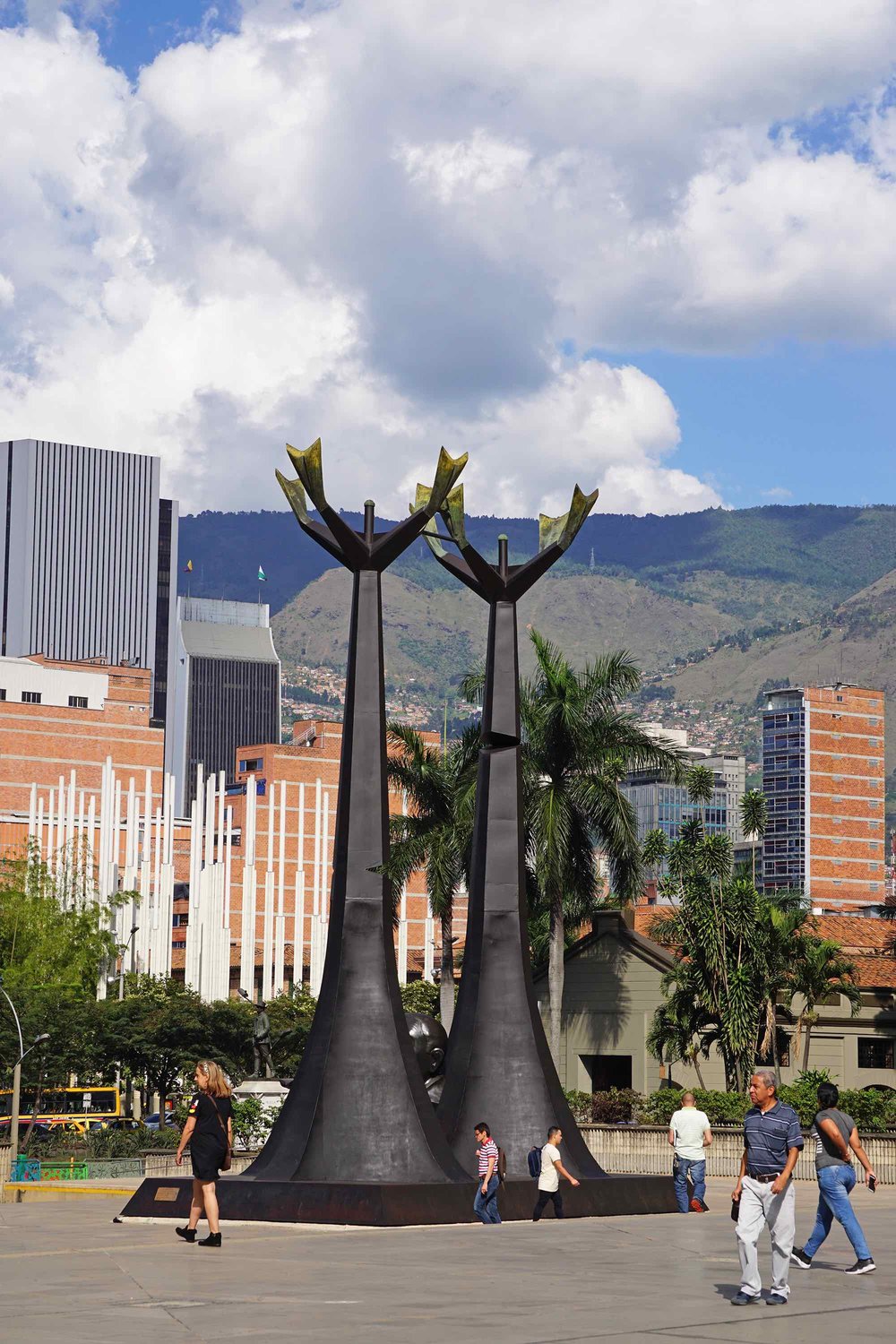
Located at 4,905 feet (1,495 meters) above sea level in a valley, the red city stands out amongst the lush green landscape. Immediately upon arriving in Medellin, you can’t help but notice the grandiose mountains surrounding the skyscrapers. The juxtaposition of the rustic mountains and modern skyscrapers is stunning and dramatic.
Paisas, the residents of Medellin, are proud of their city's progress regarding safety, public transportation, arts, parks, food scene and more, making Medellín a rival to even the most famous cities in the world.
Safety
Let’s get this out of the way. During the 1980’s and 1990’s, Medellín was once dubbed “The Most Dangerous City in the World”. As the home of the drug lord and founder of the Medellín Cartel, Pablo Escobar, the city was plagued with killings, kidnappings and other disappearances.
In the years since the death of Pablo Escobar in 1993, violence linked to narco-trafficking was still prevalent in Medellín and the rest of Colombia.
However, in the last 20 years, the city has gone through a major transformation. Homicide rates per 100,000 residents have decreased from 375 annually in the 1990s to roughly 20 annually. Meaning Medellin is off of the list of 50 Most Dangerous Cities in the World. For reference, four U.S. cities are on this list - St. Louis, Baltimore, Detroit and New Orleans.
Probably the most important thing you should know about Medellín is yes, it is safe. Yet, just with any other big city like New York or Paris, tourists and residents still need to be aware and cautious of themselves and their belongings.
Metro
The Metro is the pride and joy of Medellín. In fact, it’s the only rail-based mass transportation system in Colombia, not even Bogotá, the capital, has one.
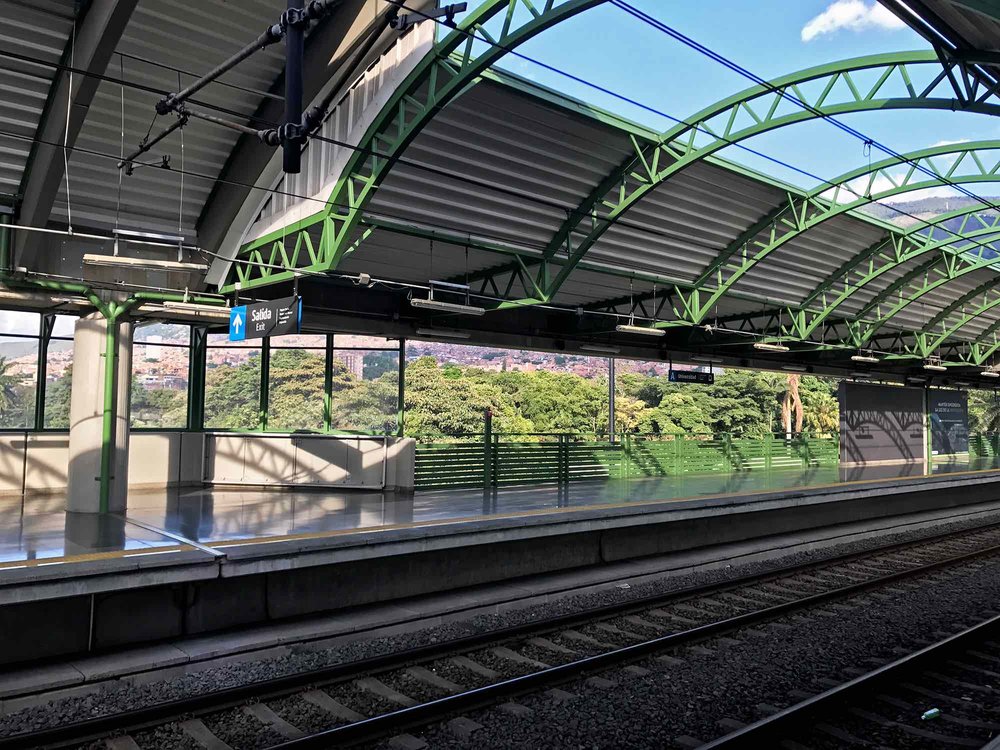
The Metro makes it easy for locals and tourists alike to get around and enjoy the many benefits and activities all around the city. Before the Metro was put in it took roughly 2-3 hours for residents of the surrounding barrios (Spanish for "neighborhood") to commute into the city, an obvious economic hardship for the locals.
In addition to the economic progress of the city, the Metro also symbolizes that the city can rival other major cities around the world like New York, London, Paris, and Barcelona with it’s public transport. There’s nothing worse than visiting a major metropolitan city and having to rely solely on car transportation as taxis are costly and hugely impacted by rush hour traffic.
Moreover, and probably most importantly, is the Metro is seen as a huge step towards ending government corruption. The funding for the Metro actually went to building the Metro which was a huge win for the people of Medellín, a clear sign that the corruption and the war on narcotics and paramilitary groups were done. In fact, the Metro is seen as the turning point for Medellín from corruption and violence to the hipster's paradise it is now.
Therefore, the Metro is HIGHLY respected in Medellín. You will not see any graffiti in the metro or on the trains, you will not see fights or homeless people - none of the things you might expect to see on the other Metros around the world like New York, Paris or London.
TRAVELERS TIP: Since the Metro is so respected, do not bring food or drinks on the Metro (except water). Do not put your feet on the seats and do not sit on the ground.
The Medellín Metro is open from Monday to Saturday from 4:30 am until 11 pm for all lines except for Line L to Parque Arvi. On Sundays and holidays, the hours are from 5 am to 10 pm. Line L to Parque Arvi is closed on Mondays and runs from 9 am to 6 pm on Tuesday to Saturday. During peak hours the train runs every 4 minutes, otherwise, it’s every 6 to 8 minutes.
Individual Metro fares cost 2,300 COP, or roughly $0.80 USD.
Upon arrival in Medellín, we recommend buying many tickets at once since the line to purchase tickets is always incredibly long. For example, if you hand the cashier 20,000 COP your card will have 8 tickets on a plastic, rechargeable card.
Alternatively, you can get a Civica card which is a rechargeable card that offers reduced prices. You can only purchase and re-charge at a few stations, making this slightly less convenient than purchasing a standard re-chargeable card. Individual ticket prices with the Civica card costs 2,000 COP.
Museums
Medellin is in no short supply of cultural activities including museums.
Probably the two most important for you to visit are the Museum of Antioquia and Museo Casa de la Memoria.
Museum of Antioquia is an art museum featuring the artworks of famed artist, painter, and sculpture Fernando Botero, a Medellín native. He donated more than 1,000 pieces of his own and others art to the Museo de Antioquia. His work can also be found in New York and Paris. Often when I asked locals what they’d like Medellín to be known for (instead of Pablo Escobar), Botero was the resounding answer.
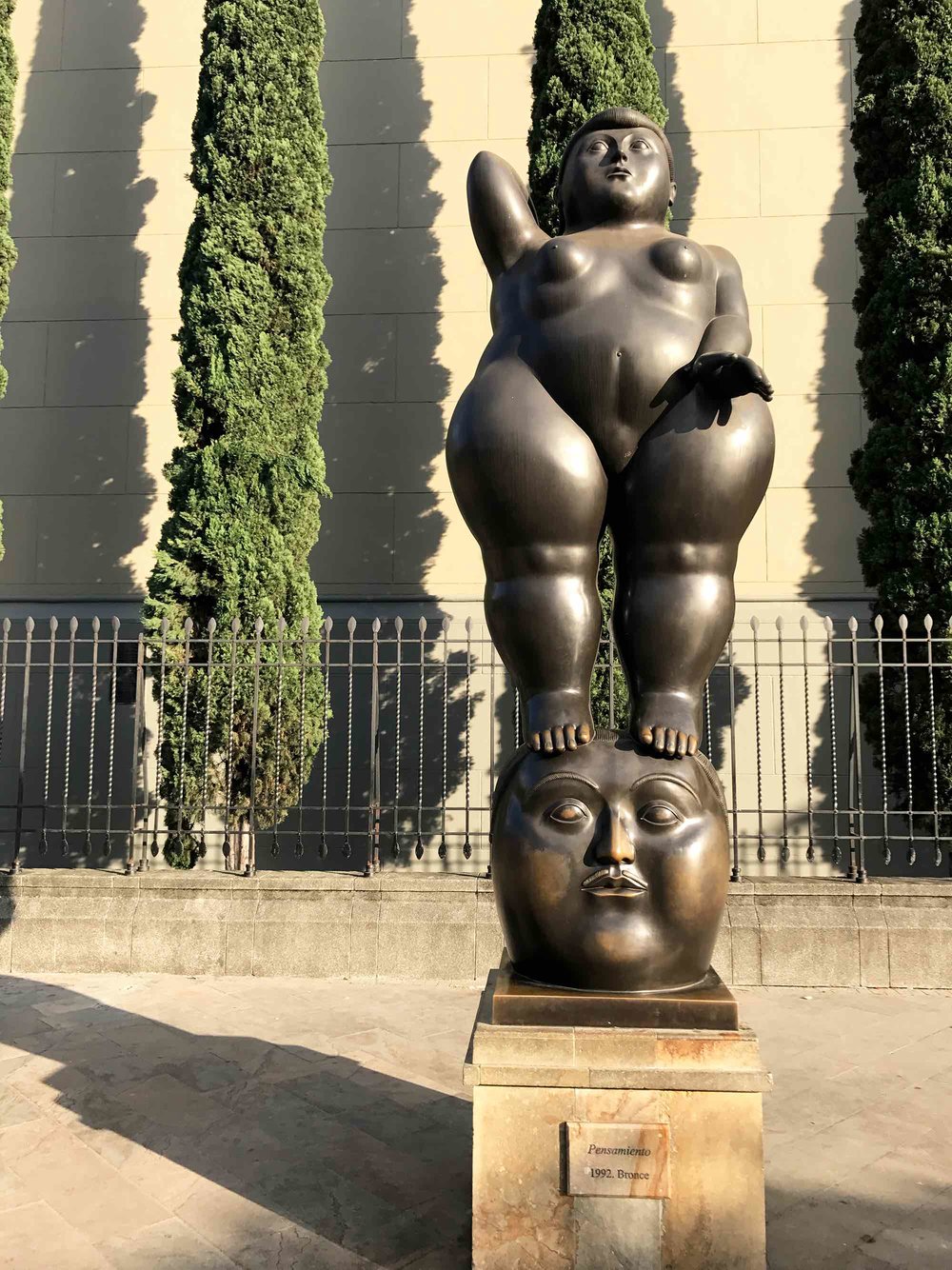
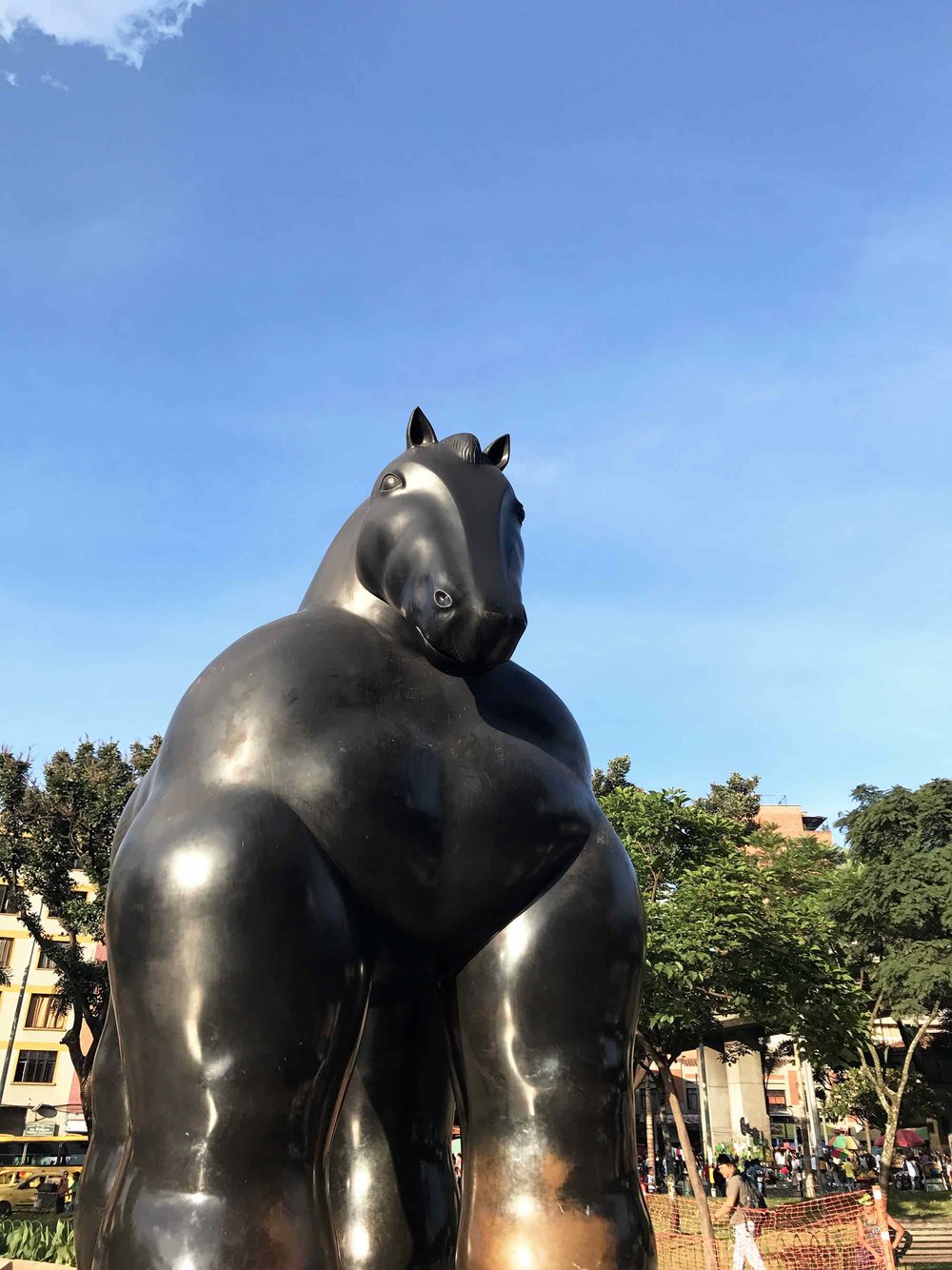
Museo Casa de la Memoria, in English the Museum and House of Memories, is a free museum honoring the hundreds of thousands of people who were affected by the decades of narco-trafficking conflict; those who died, disappeared or lost loved ones. It’s an incredibly moving experience that pays tribute to the turbulent history by offering different perspectives of the Colombian wars & armed conflicts. Upon entry, there’s a sign that says what we do not learn from we dare to repeat. This seems to be a common thread in Colombia. The strong desire need to share the history of what happened, in order to not repeat the past.
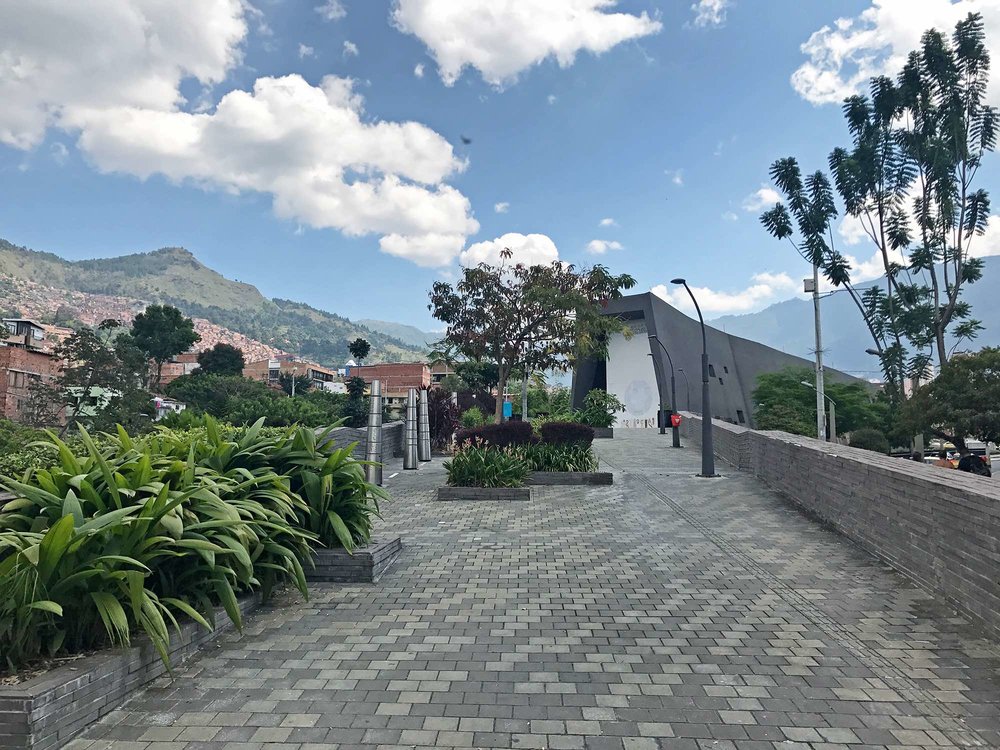
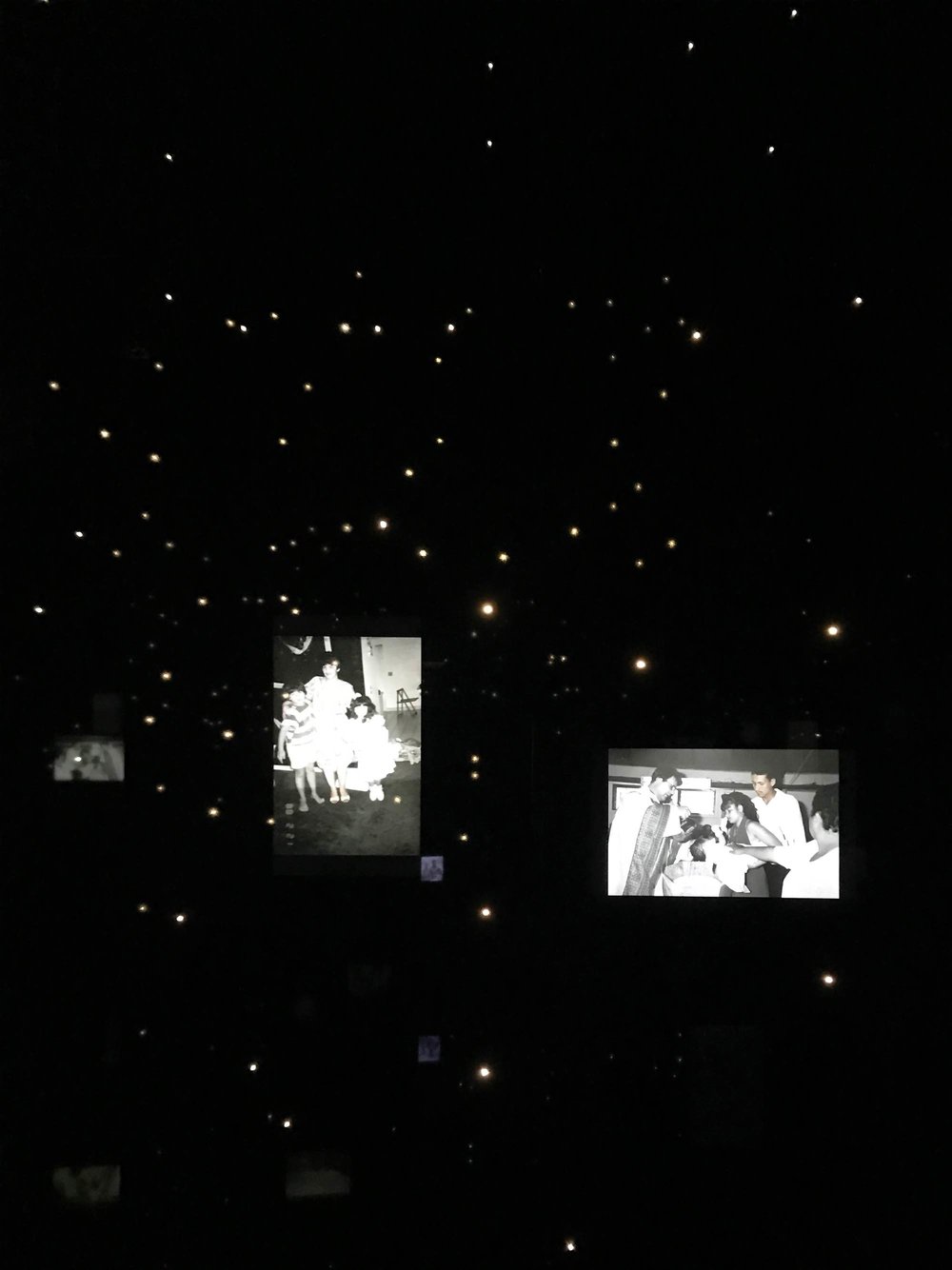
Videos of people who died or disappeared because of narco-trafficking

Videos of people who died or disappeared because of narco-trafficking
Parque Explora is an interactive science museum, great for children, families, and groups of any age! My friends and I had hours of fun exploring, playing and learning in the several themed rooms which include the Mind and Time. Prepare to spend 4 or more hours here!
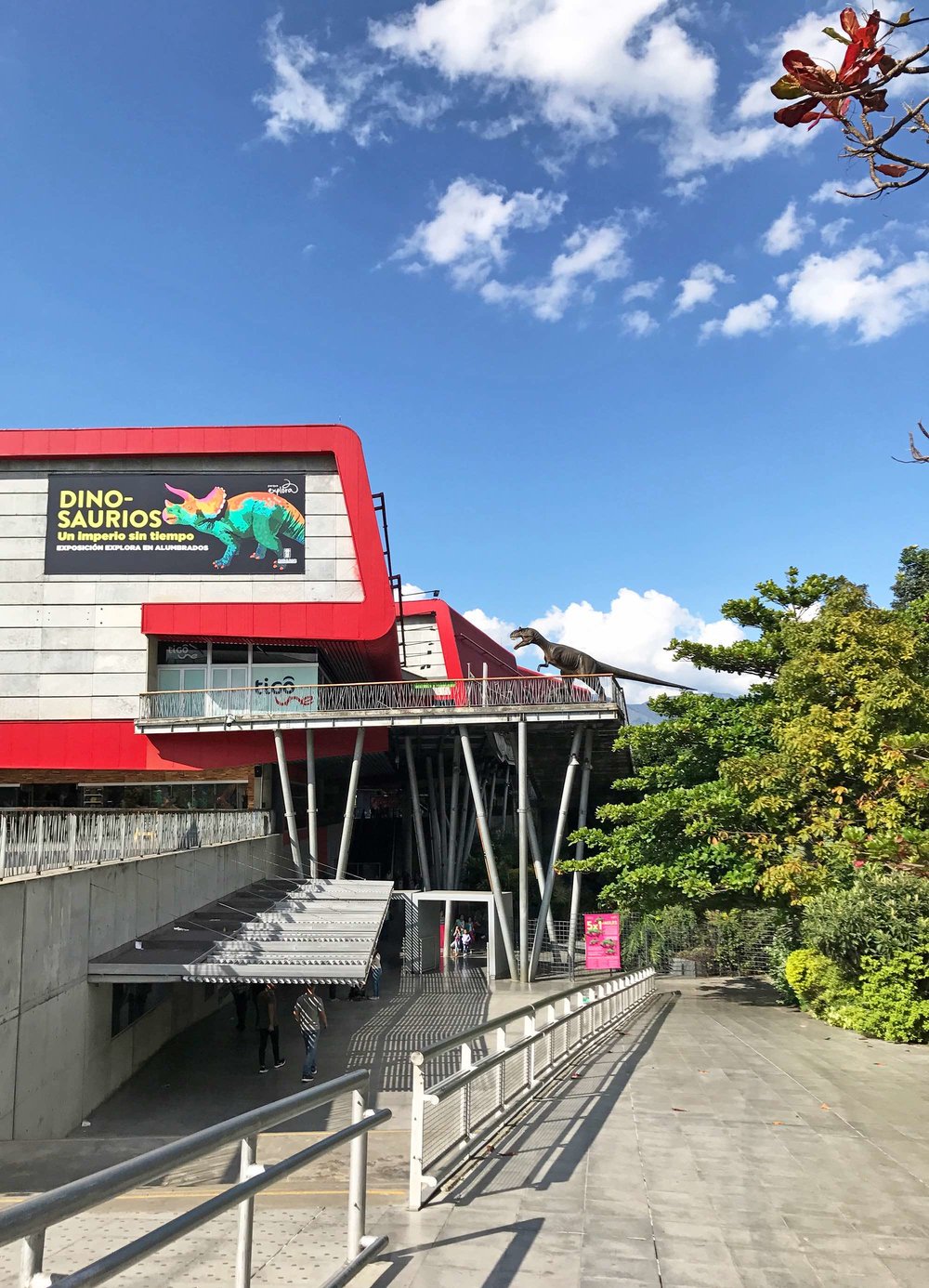
Parks & Plazas
One thing that I love most about Medellin is how green the city is. A large sprawling city surrounding by majestic lush green mountains. There are parks and plazas all over town to enjoy the benefits of nature.
Parque Arví is an ecological nature preserve providing ample hiking trails. It’s a perfect way to spend a day, getting out of the city and into the woods. Upon arriving, there is a wonderful market selling local food and other goods. While there are vendors every day, the weekends provide many more options. Parque Arví is located in the village of Santa Elena and is accessible by Metro and Metrocable on Line L. Parque Arví is open to the public from Tuesday to Sunday between 9:00 am and 6:00 pm.
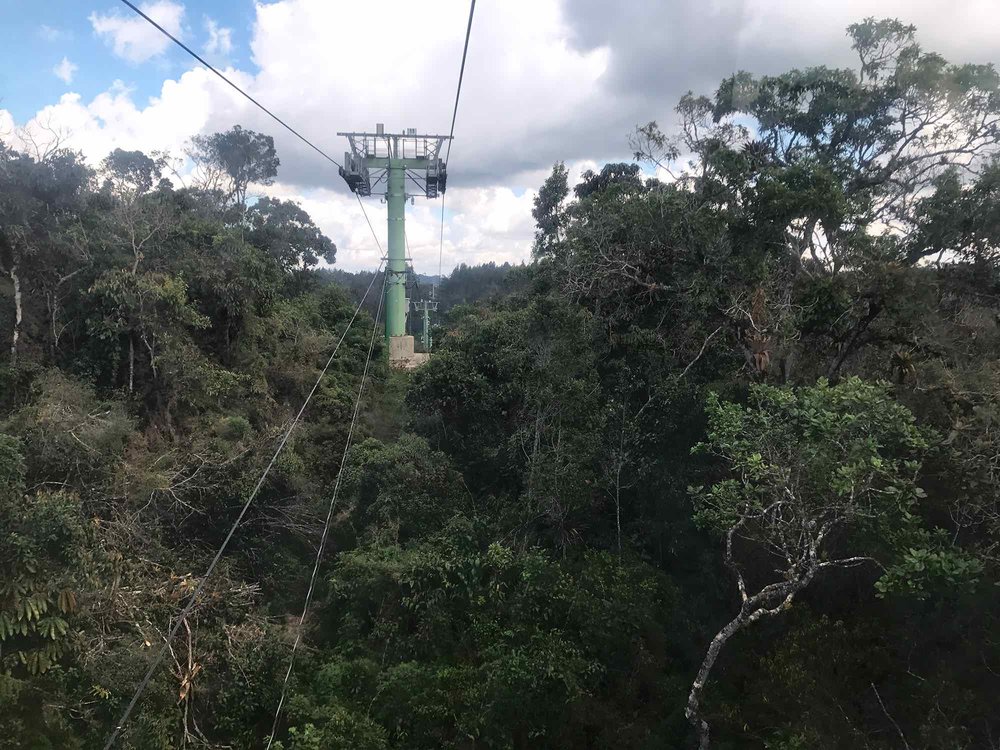
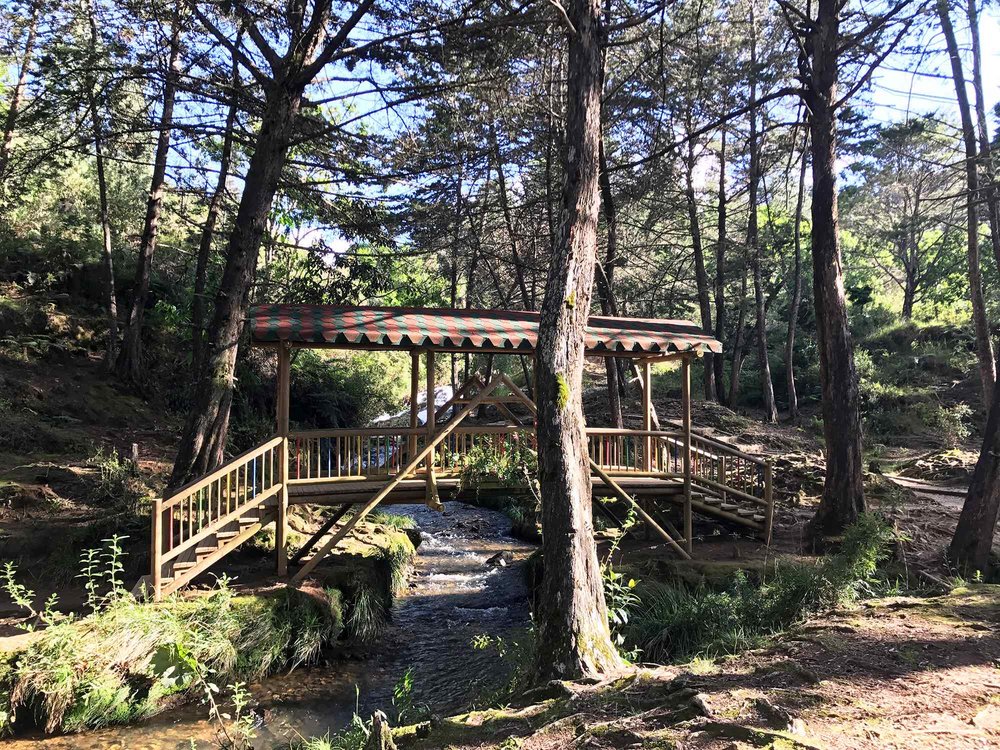

Jardín Botánico or the Botanical Garden of Medellín is a free garden in the center of the city offering its’ visitors a tranquil place to relax and enjoy the flora and fauna. Here you’ll find an on-site restaurant, library, and snack train car. Located at the University Station of the Metro.
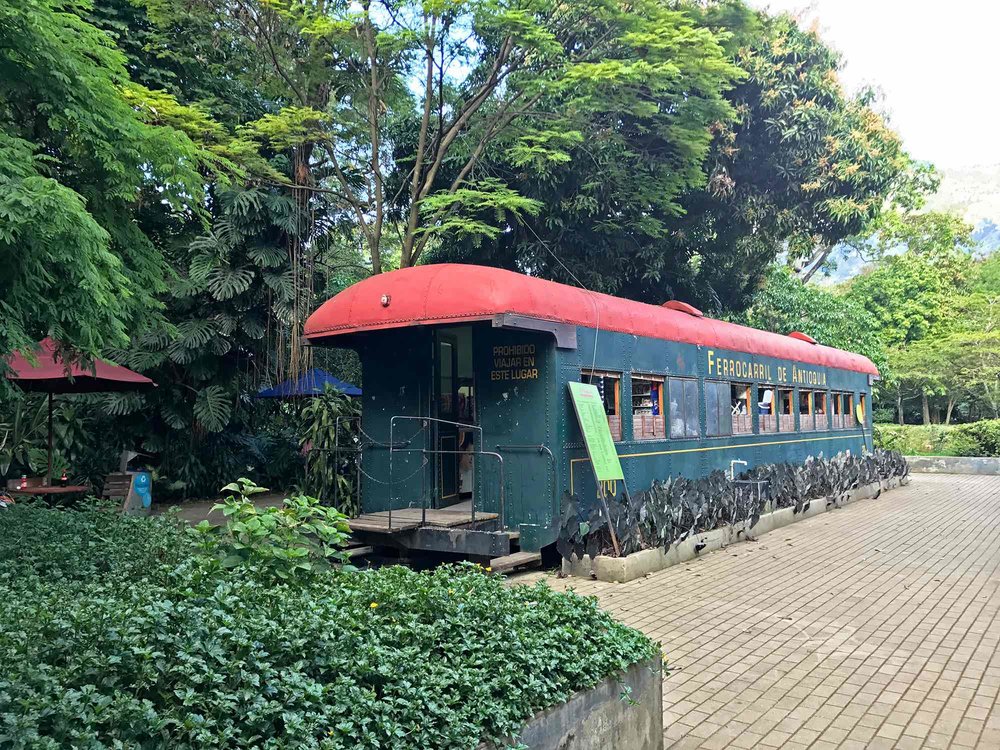


Parque Norte is a family-friendly theme park with rides and “7-D” simulators. Parque Norte has a total of over 30 attractions grouped into five different plazoletas (small squares) that surround a small lake. During the holidays, Parque Norte is a great place to walk around and enjoy Christmas lights and decorations. Also located at the University Station of the Metro.
Plaza Botero, or Plaza de Las Esculturas, is accurately named for the public space containing 23 sculptural works of Botero. The square surrounds the Museum of Antioquia and Uribe Palace of Culture (Palacio de la Cultura Rafael Uribe Uribe). Located near the Parque Berrio metro station.
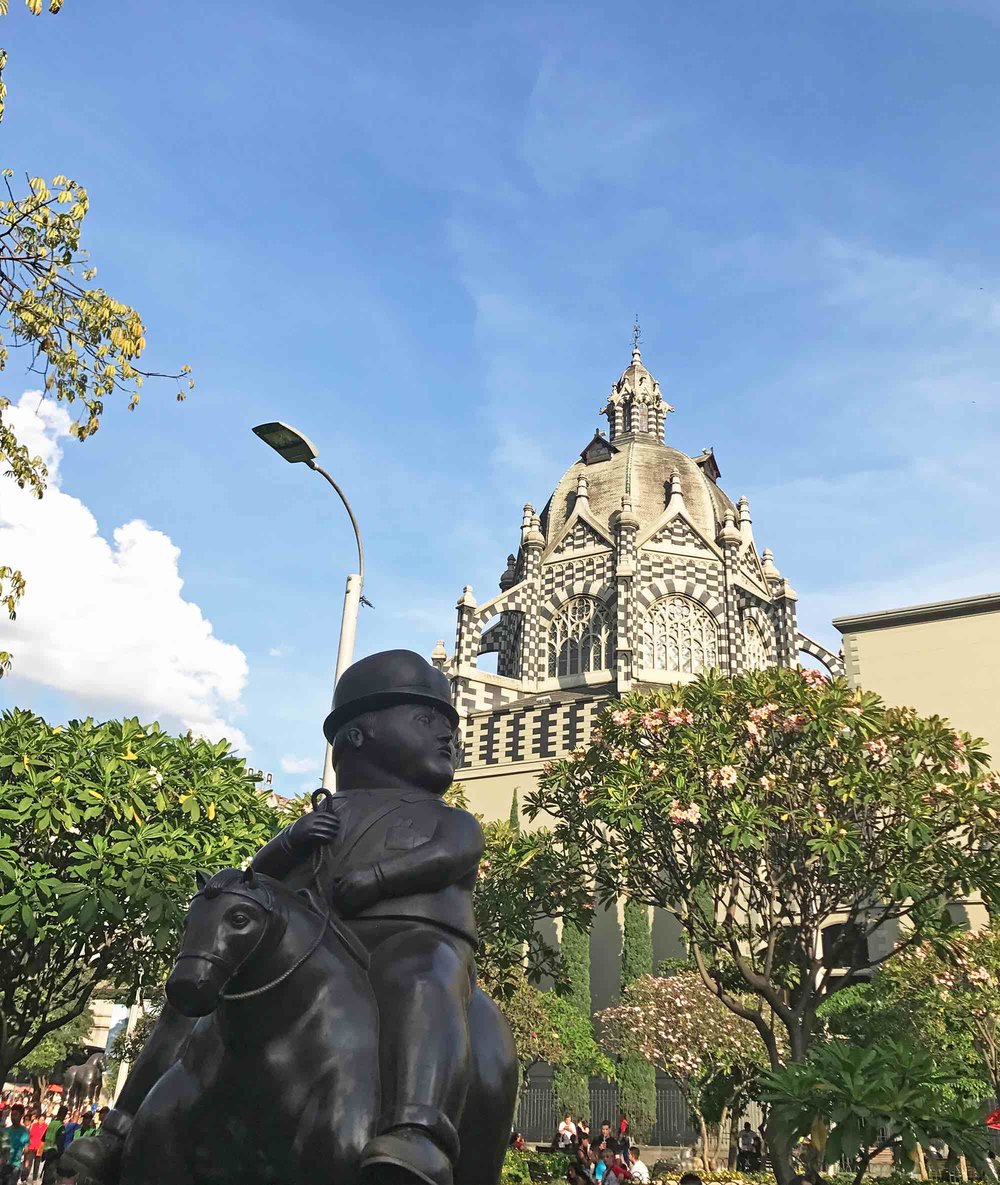
Parque de las Luces, or Park of the Lights, was once home to many homeless people and drug addicts until the city decided to invest in cleaning up the area. Now, the park is home to 300 lights, each of which is roughly 65 feet (20 meters) high that display a bright blue light at night. It truly is a delightful sight.
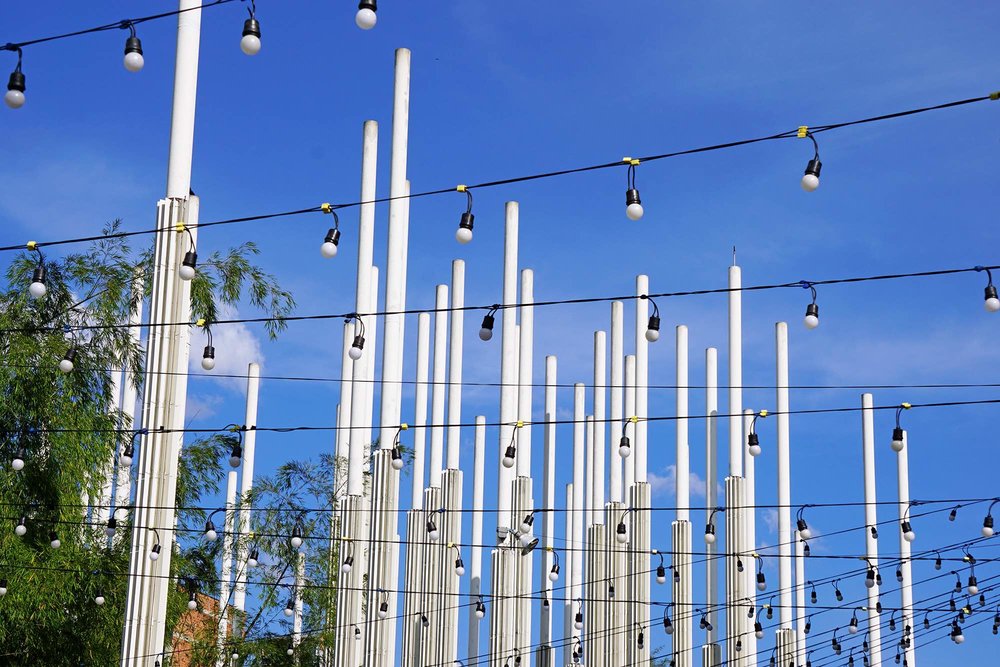
Parque San Antonio is known as an alternative park, where the hipsters hang out. This park is particularly impressive because in 1995 a guerrilla planted a bomb in a Botero bird sculpture. The then Mayor wanted to remove the statue, but Botero insisted it need remain to remind the citizens of the history and he donated another bird sculpture to accompany the blown up bird.
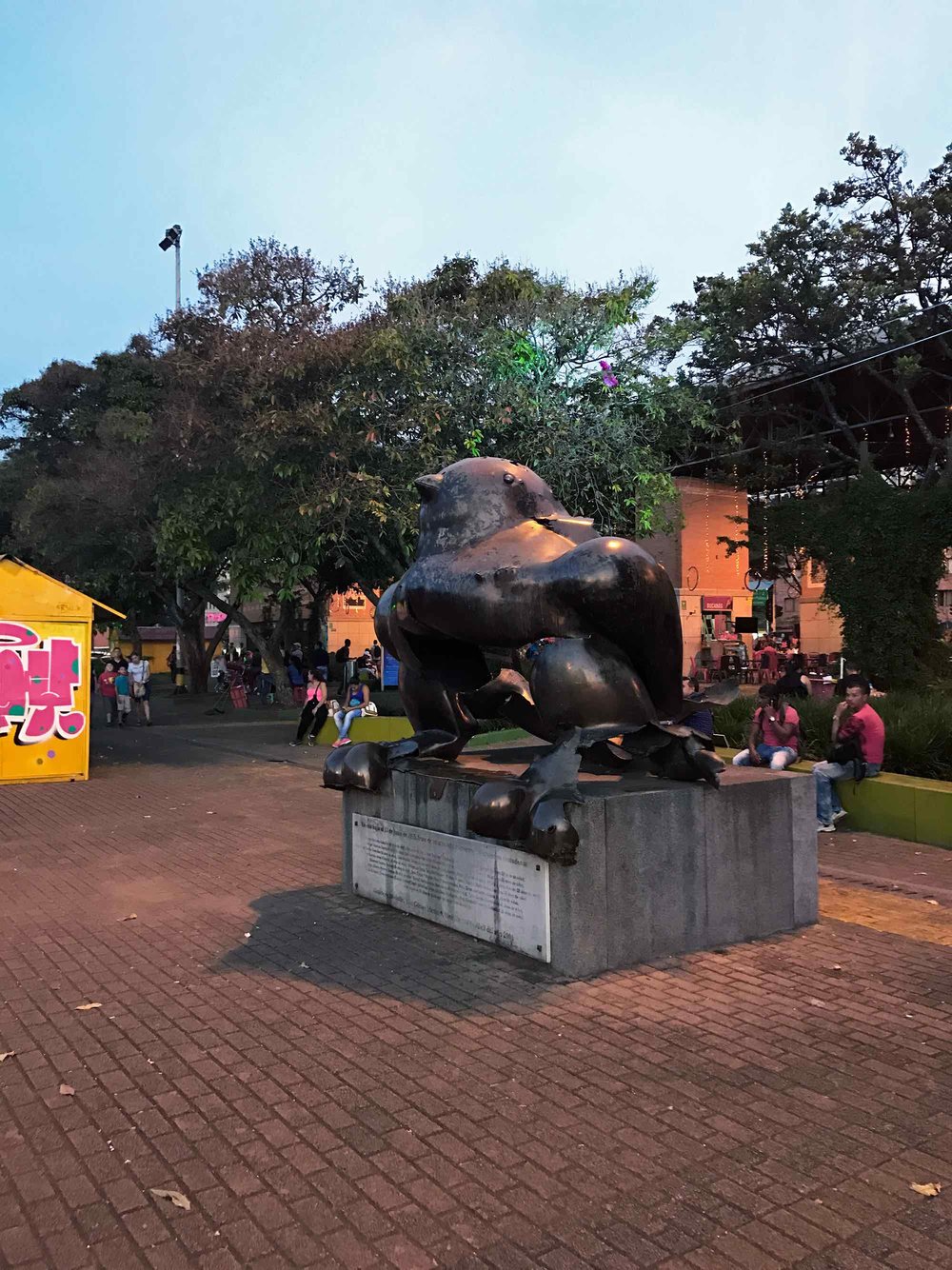
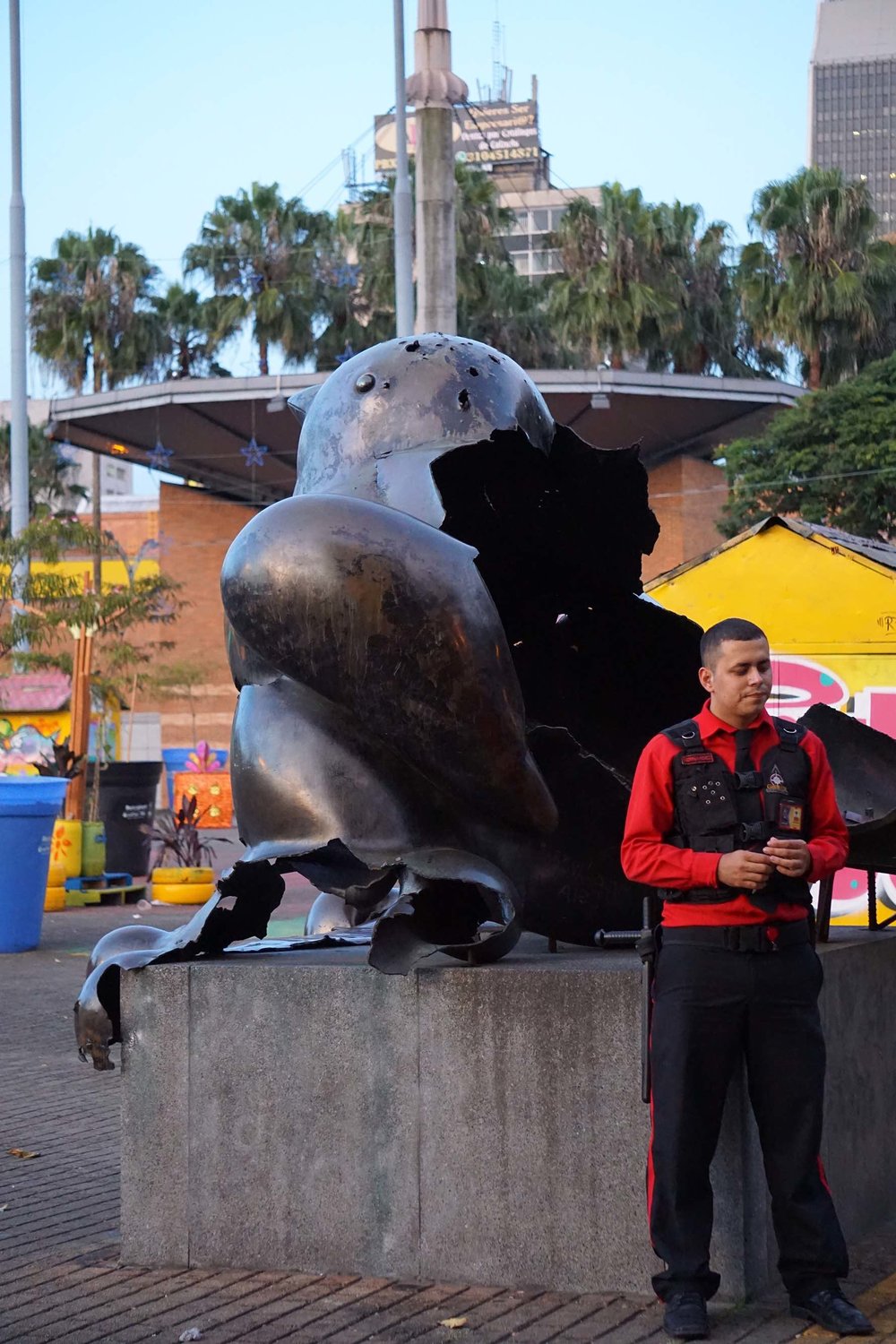
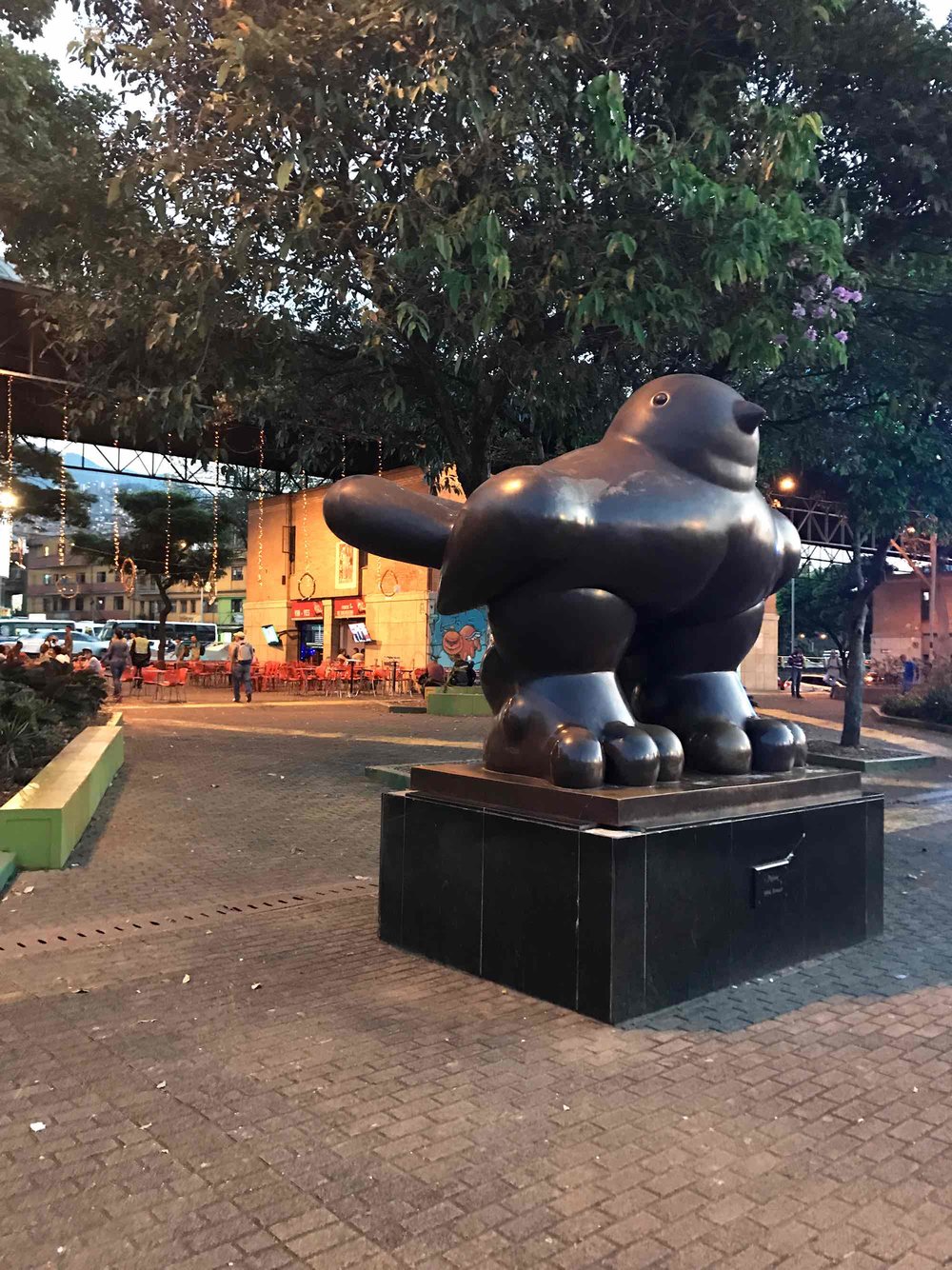
NOTE: Like most parks or public spaces in major cities, be careful or avoid visiting at night as it can be dangerous with pickpockets.
Food, Drinks & Nightlife
The two big neighborhoods for hanging out and going are are El Poblado and Laureles.
El Poblado with Parque Lleras is a bit nicer, fancier, trendier than the more “middle-class” Laureles which is a bit more local. Chances are you’ll feel comfortable in either.
The area of Envigado would be a third up and coming going out area, still very local.
Salsa Dancing, Reggaeton & Bachata
Son Havana in Laureles is one of Medellin's most popular salsa bars.
El Tibiri Salsa Bar is very famous, especially for being hot and sweaty.
A great option on Mondays is “Fonda La Chismosa” located in Las Palmas.
For Tuesdays “El Eslabon Prendido” and the fonda “Dulce Jesus Mio” in Las Palmas.
TRAVELERS TIP: A “fonda” is a traditional Colombian bar/nightclub with old-school wooden tables, crazy decorations, memorabilia relics of the past, colorful neon lights, etc.
Perro Negro for some good old reggaeton party. Open Thursday-Saturday nights.
El Callejon in Envigado is also nice for reggae and salsa vibes.
Drinks & Other Clubbing
Sixttina is considered one of the most technologically advanced nightclubs in Latin America, featuring a mix of electronic to hip-hop and reggaeton.
Vintrash in Parque Lleras of El Poblado for a mix of electro and Latino music.
Head to “El Social”, an El Poblado staple for beers
“Envy Rooftop” is a roof top lounge/bar with live DJ and an innovative aquarium-style pool. Located at the top of the Charlee Hotel in the middle of Parque Lleras in El Poblado.
9+1 (Calle 9 mas 1) is a great club for techno.
Victoria Regia Jazz Club is a funky, sustainable and dog-friendly joint with live music and gourmet fast food.
Imperium on La 33 is a Rumba bar located on Calle 33, a stretch of discotecas and restaurants located in the heart of Laureles.
Food
Veg Station offers vegetarian and vegan options. Get the Hamgurguesa Especial – it’s delicious! Even my meat-eating friends loved it and craved it so we went back a few days later to have it again, it’s that good.
Food trucks in the Ciudad del Rio neighborhood.
Café Zorba serves Italian/Mediterranean food and is known for their incredible pizza. They even have vegan pizza options!
Carmen serves contemporary South American food. The owners are American-Colombian and both trained at Le Cordon Bleu.
Try Alambique Restaurant on Calle 10 in El Poblado. It's kind of hidden but super nice and has really good food!
El Cafe de Otraparte in Envigado has really good food and drinks as well and it's a lot cheaper than in El Poblado tourist hot spot.
Brasarepa in Envigado serves up typical Colombian dishes in an unpretentious setting. It was featured in Anthony Bourdain’s 2008 Colombia episode of No Reservations.
For coffee, head to Pergamino Café or Café Velvet in Parque Lleras of El Poblado.
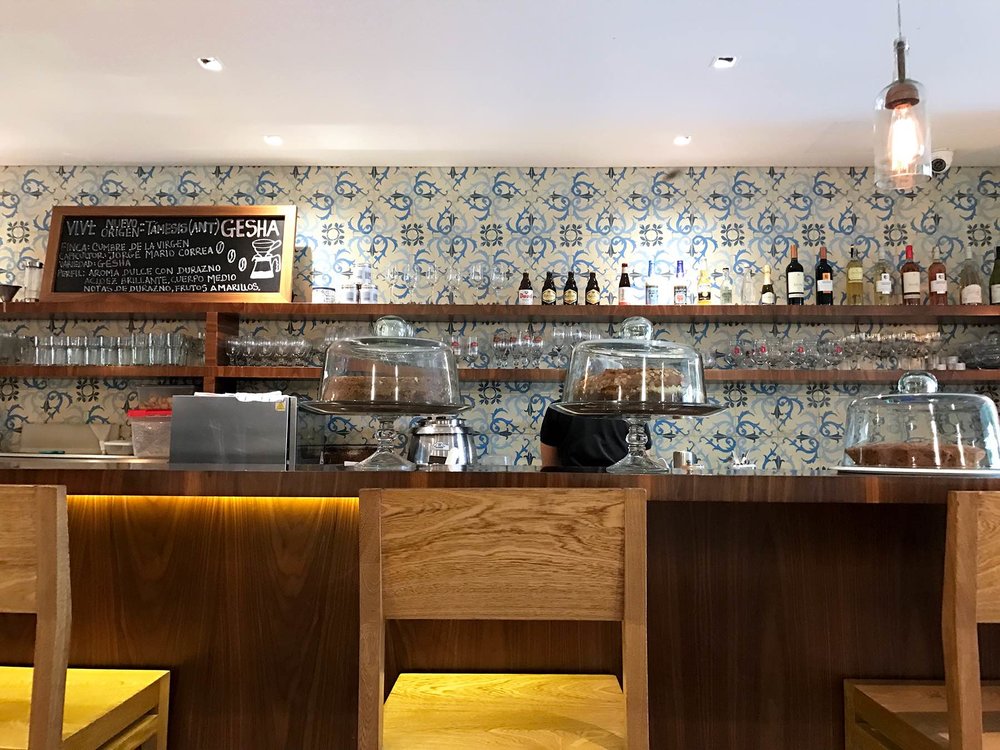
Cafe Velvet
Other Activities
Paragliding - due to the winds and the mountains, paragliding is a wonderful option of providing you with a unique perspective of the city. Below is a picture of my my incredible & inspiring friend Terry, founder of Terry Stay Tripping, paragliding over Medellin.
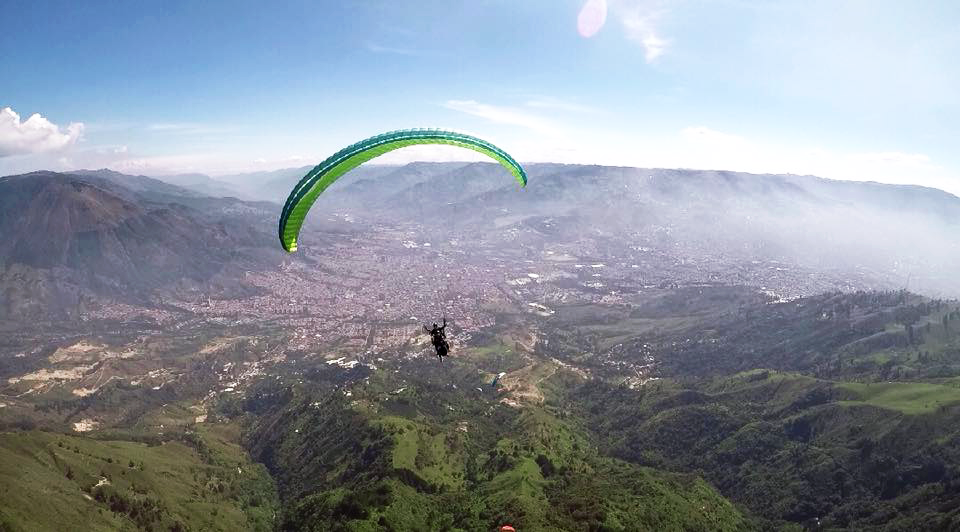
Free Walking Tour - Without a doubt, the free walking tour will give you a great overview and introduction to the city. It’s a 4-hour tour, and you need to book online a day ahead to reserve a spot.
Trams/Metro Cable - there are three Metro Cables in Medellín. One located off of Line B at San Javier and is included in the price of a metro ticket. The other two are off of Line A at Acevedo, these two are connected will take you to Parque Arví – the first of which is included in the price of the ticket and the second you’ll have to pay 5,000 COP. From above you’ll have a great view of the cinderblock and red brick houses with corrugated tin roofs.
TRAVELERS TIP: Do not leave the metro station to access the Metro Cable.
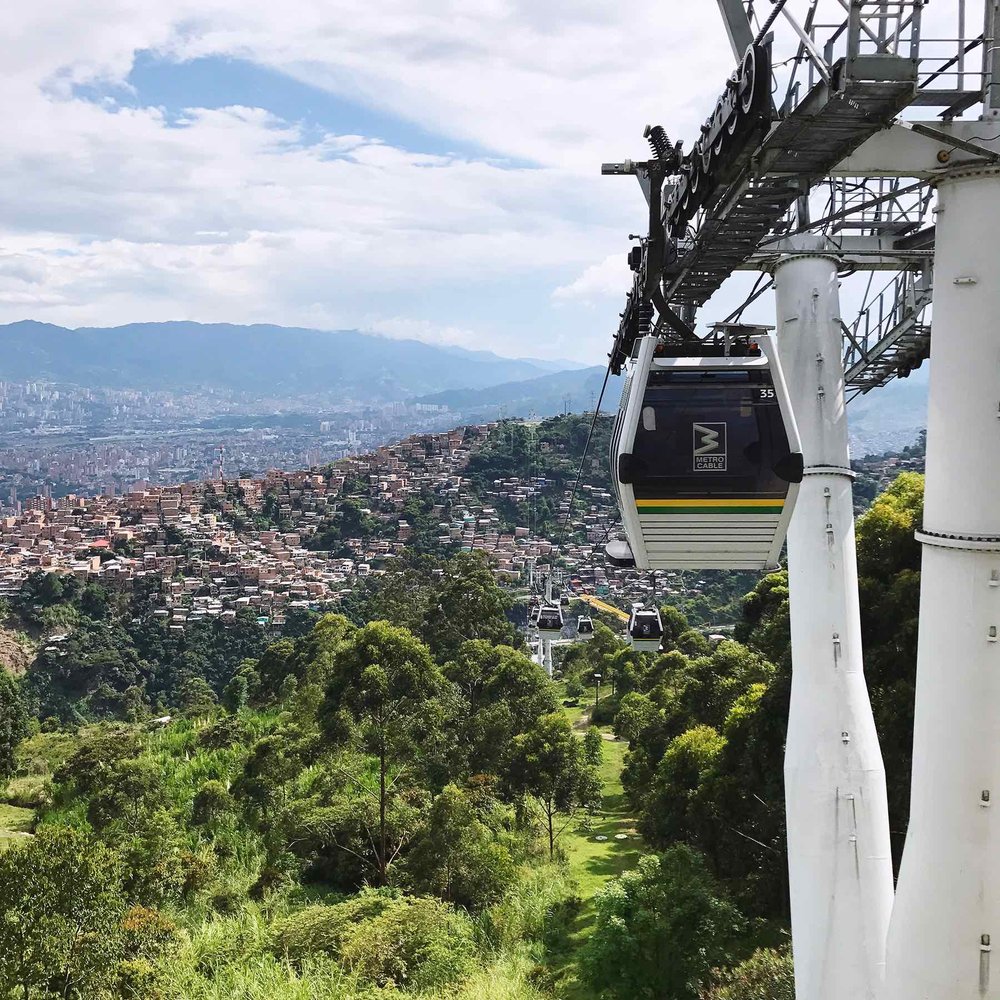
Comuna 13 Neighborhood & Graffiti Tour - Comuna 13 (Comuna Trece or San Javier Barrio) was once the most dangerous community in Medellín. Today while still over-populated and a low socio-economic zone, the neighborhood is a symbol of creativity, community and accessibility – three pillars of progress for Medellín as a whole. Here you’ll find incredible street art and unique outdoor escalators. Also located at San Javier Metro stop.
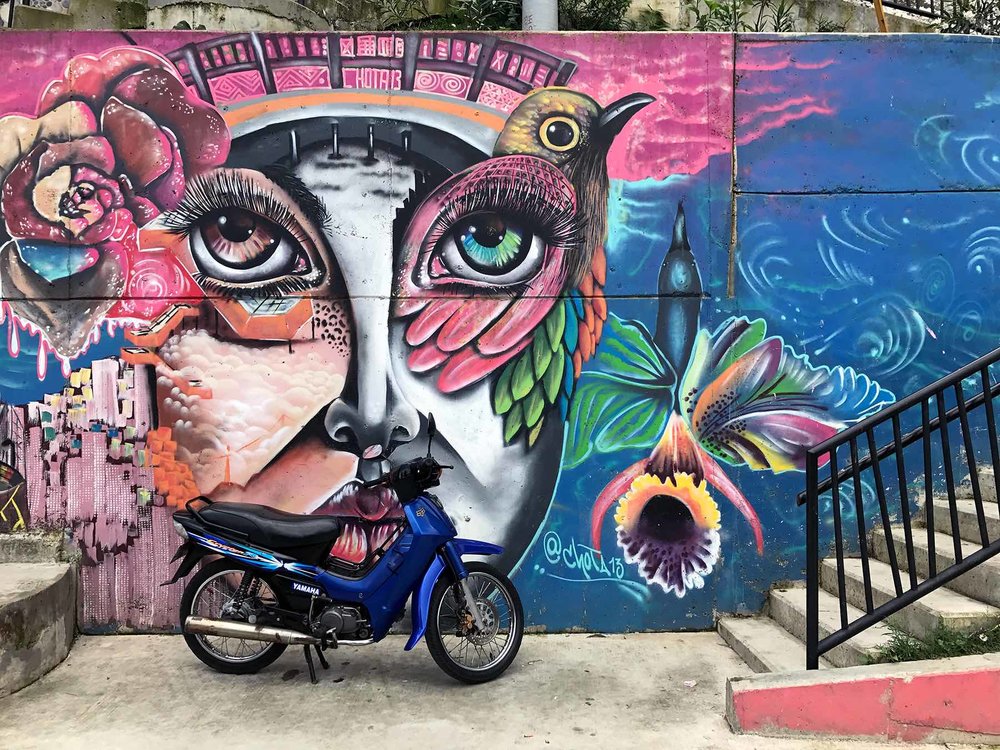
Events, Festivals & Awards
Feria de Las Flores - Colombia hosts the annual Feria de Las Flores or The Festival of Flowers. The week-long event in early May includes music, parades, and competition.
FUN FACT: Colombia is the second largest supplier of flowers to the world market after Holland and 80% of the flowers imported to the U.S. come from Colombia. Source.
Los Alumbrados - Medellín is crazy for Christmas. Throughout all of December and the beginning of January, you can see Los Alumbrados, the Christmas lights decorating Medellin, making the city the most beautiful Latin American city for the holidays. I was in Medellín for Christmas and can attest to this incredibly festive sight.
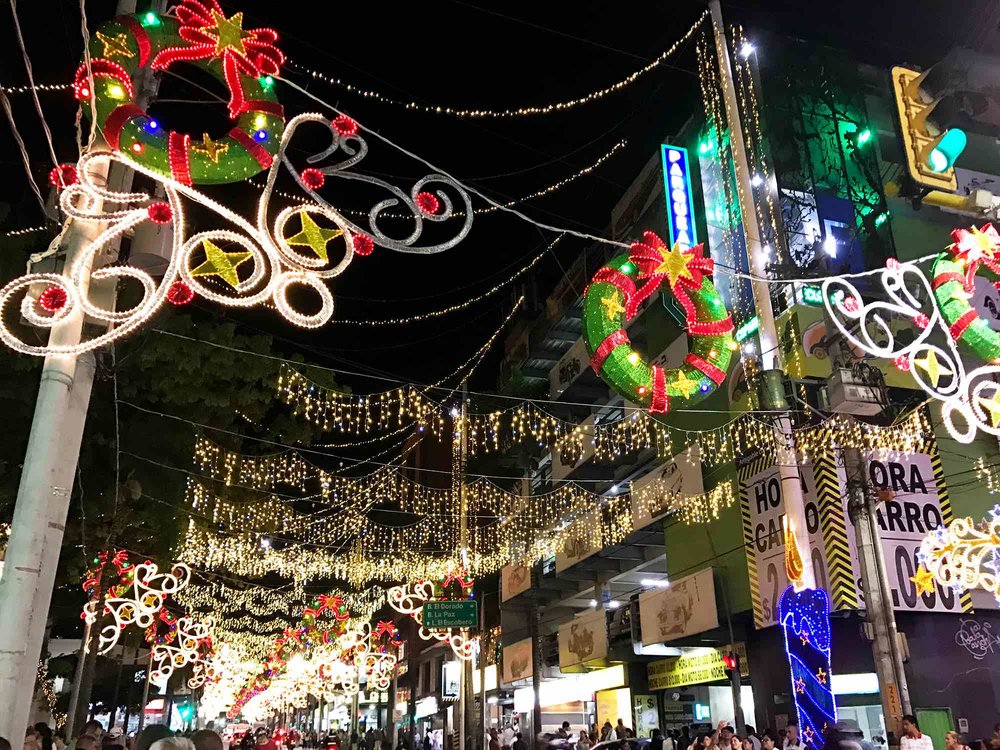
The Wall Street Journal, in partnership with Citibank and the Urban Land Institute, named Medellín “Innovative City of the Year” in 2013. Source.
Other Important Information
You can drink the tap water in Medellín. In fact, you can drink the tap water almost everywhere in Colombia except for the coast. So Medellín, Guatape, Jardin, Salento, Bogota, etc. feel free to drink the water!
Bring a light rain jacket and umbrella to Colombia. The umbrella is useful on the hot, sunny coast as well as in the hills.
If you’re going to be in Colombia for roughly a month, getting a SIM card is recommended. The SIM card costs only 5,000 COP which is less than $2 USD and you can choose which plan makes sense to you. With any plan you’ll get free Facebook Messenger and WhatsApp.
NEXT: A Taste of Colombia's Rich Coffee Region
Visit Colombia
Convinced Medellín is the hip, diverse vacation you're in search of?
Contact us to plan your custom vacation based on real knowledge and personal experience of the city.
Save on Pinterest
